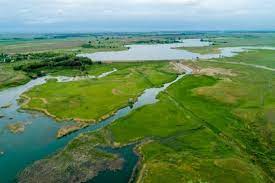The Caspian tiger once lived in 12 countries, from the west in Turkey, to the east in central Asia. Seemingly, across this range, they did not have consistent populations but the tigers lived on the shores of lakes in the region, with 15-20 valleys being their strongholds.

On the whole, the Caspian tiger lived in relative harmony with humans up until the Russian invasion. The Russians brought with them, the custom of keeping livestock, which brought the humans into direct competition with the tigers. As a result, Russia started paying a bounty for every tiger killed. This was incredibly successful, such that by the 1940 they were exterminated. The hunting was banned in the 1940s but too late to save these tigers.
After this, the tigers former home was taken over and converted into farmland, so the few that survived the hunting, soon lost what home was left.
In the 1990s as Russia fell, WWF started working to help the ecosystem recover. As a result in the late 2000s a satellite analysis was carried out on the area, and one area stood out – a delta of the Lli river in Kazakhstan. It was found that if the prey base was first helped to recover (animals such as boar and deer) then this area could easily support tigers.
Now, it is true that the Caspian tiger went extinct 70 years ago. However, recent genetic analysis has shown that the Caspian and Amur tigers are not distinct enough to be classed separately – they are essentially one subspecies, with a large range. It is true that Caspian tigers tend to have had shorter fur, but tigers are able to adjust in this way, so tigers that are moved to warmer climates will grow less fur and be able to thrive.
Given Kazakhstan being the most advanced of the countries in the area, with relatively high living standards, they should be able to carry out the plan. The delay until 2026 is to allow time for the prey base to build up to sensible levels.











